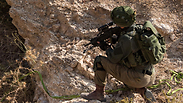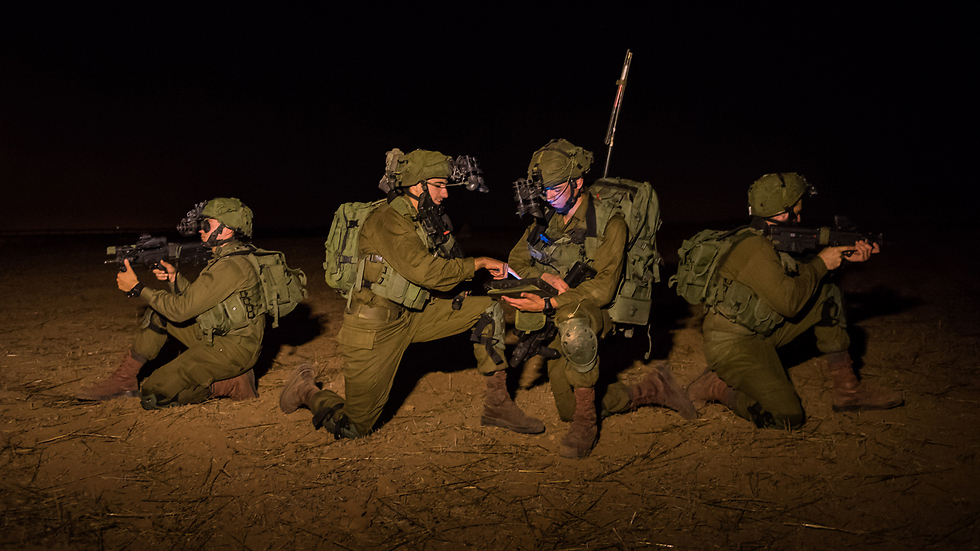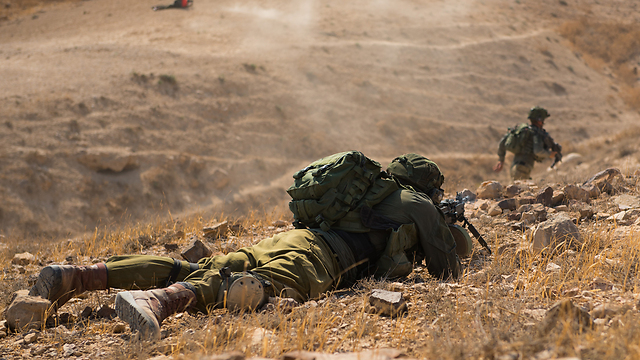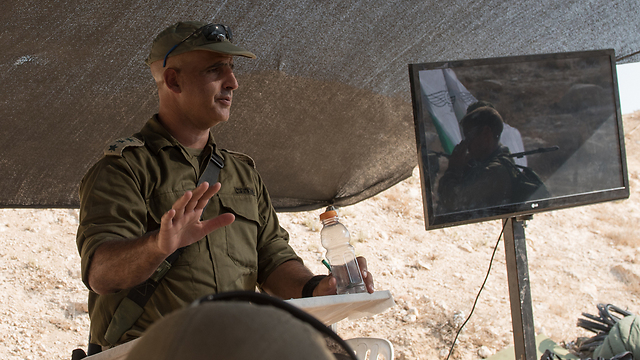
From thwarting terror attacks in West Bank to facing threats in the north
Following a six month deployment in West Bank terror hot spots such as Hebron and Ramallah, the Nahal Infantry Brigade is transitioning into a three-month training period focused on threats from the north; 'We were a step away from having dead Israelis in the last few terror attacks. These soldiers displayed operational understanding.'
While fears have been raised as the wave of terror appears to be on the rise once again, the IDF is also aware that the latest series of attacks could have ended with far worse consequences with Israelis being killed or seriously wounded.
One of the units responsible for thwarting the attacks thus far is the Nahal Infantry Brigade, particularly the 50th battalion, which has been stationed in Hebron for the last six months.
Soldiers will remain in the area—which has become particularly prone to terror attacks—during the High Holidays as well, before moving on with the rest of the brigade to training exercises for three months in the Jordan Valley.
The vast majority of the training exercises will be devoted to simulating a Third Lebanon War, while the remaining portion will focus on the Gaza Strip. Joining the 50th battalion will be the brigade's reconnaissance battalion, as well as the 931st and 932nd battalions, who recently received distinction for operations in the Ramallah area.
"The events of the last days in the West Bank prove that we, as soldiers on the front, are not affected by intelligence or data which indicates a decline in terrorist activity," a senior brigade officer explained to Ynet. "A car that is racing towards a bus stop, like what happened last Friday at the Elias Junction, traveling at 120 km/h arouses the suspicions of soldiers from a distance, who act to neutralize the threat before people are hurt. These are sharp soldiers who know how to end an attempted terror attack quickly. The same is true for a soldier who is stabbed in the neck by a terrorist who approaches him with a piece of paper and fights with him until his comrades come and kill the terrorist, even though the knife is a centimeter from killing him. We were a step away from having dead Israelis in the last few terror attacks. These soldiers displayed operational understanding."
The same officer noted that even though many don't like to hear it, "I understand that killing a terrorist brings more that want to avenge him or her. I don't expect a soldier to empty a magazine into a stabber and I don't expect a soldier who identifies a threat from 5-7 meters away to kill when he could stop the attack with a kick, a warning shot or a bullet to the leg.
"We want to finish these incidents with the minimum loss of life on both sides. On the other hand, when there is danger to life, there is no question. If the soldier has to kill the terrorist, then he will kill him. I don't give a soldier a prescribed course of conduct; I just give him rules and principles that he needs to act in accordance with and an understanding that they may be examined after the fact. We are involved in life-threatening situations."
The commander of the Nahal Brigade, Col. Amos Hacohen, reviewed the attacks with soldiers and was impressed that they acted "heroically, at point blank range." Overall, Nahal soldiers killed 20 terrorists during their deployment in the West Bank, while two soldiers were lightly wounded.
The soldiers will now have to change mindset and begin preparing for what Col. Hacohen calls the "Third Lebanon War." The brigade commander decided to expose the junior command structure to the IDF's official assessments of what the next war against Hezbollah will look like. The assessment includes thousands of rockets being fired on soldiers and civilians every day as well as infiltration attempts by Hezbollah's "Radwan" company into Israeli settlements.
Drills will be held in villages in the Galilee with simulated enemy engagements in order to make it as realistic as possible for soldiers. "Gaza is relatively simple to maneuver, so we chose risk management more in the northern sector. The cognitive and mental strength of soldiers will be the biggest challenge."
















